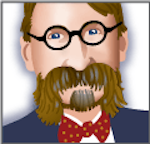Mil-spec dual-port SRAMs for radar, flight computers, and communications equipment introduced by QP Semiconductor
SANTA CLARA, Calif., 8 June 2010. QP Semiconductor in Santa Clara, Calif., is introducing the QP7024 and QP7025 dual-port static random-access memory chips (SRAMs) for high-speed and high-bandwidth military and aerospace applications using multi-processor based systems in military radar, flight computers, and military communications equipment.
These mil-spec SRAMs for embedded computing have dual-ported memory cells allowing simultaneous reads of the same memory location, and provide two independent ports with separate control, address, and I/O pins permitting independent access for read or write to any memory location. These aerospace and defense memory devices may be used as a stand-alone solution for x16 applications or combined to support 32 bit-wide systems using the MASTER/SLAVE feature.
These military and aerospace memory chips are available over the full military temperature range of -55 to 125 degrees Celsius at 35-, 45-, 55-, and 70-nanosecond speeds, and have 2 volt data retention and standard power selections. Both parts are packaged in ceramic 84-pin PGA and 84-pin ceramic quad flat-pack packages.
For more information contact QP Semiconductor, an e2v company, online at www.qpsemi.com.
Follow me on TwitterJoin the PennWell Aerospace and Defense Media Group on Linkedin at http://bit.ly/9MXl9
Become a fan of Military & Aerospace Electronics on Facebook at http://bit.ly/1VGM0Q
Post your aerospace and defense-related material to the #milaero community on Twitter. Use the #milaero hashtag.
Join your industry colleagues in the Command Post community online at http://community.milaero.com

John Keller | Editor
John Keller is editor-in-chief of Military & Aerospace Electronics magazine, which provides extensive coverage and analysis of enabling electronic and optoelectronic technologies in military, space, and commercial aviation applications. A member of the Military & Aerospace Electronics staff since the magazine's founding in 1989, Mr. Keller took over as chief editor in 1995.
